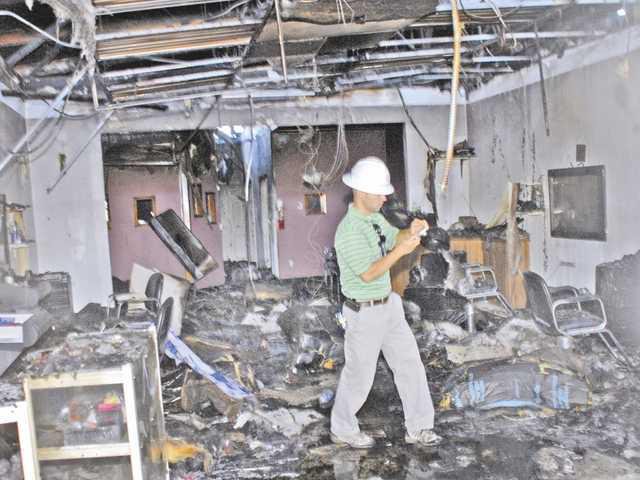Fire losses in Manteca soared 160 percent in 2011 to $3,236,630 compared to 2010.
That’s the bad news.
The good news is Manteca firefighters improved their “property save rate” to 89.71 percent last year. That translates into $28,226,555 in property savings. And that was done while fire calls jumped from 143 in 2010 to 241 in 2011.
Manteca’s Fire’s effectiveness is outlined in the annual department report issued this week by Fire Chief Kirk Waters.
The increase in fire calls was part of a 15 percent overall increase in emergency responses that reached 4,425 in 2011 or an average of 12.12 calls a day. That is in addition to 1,214 service calls that were not classified as emergencies.
Almost a third of the fire losses were in the $1.1 million fire that occurred in mid-June destroying the center housing Rocko’s and other businesses on North Main Street.
Manteca handled the increased call volume while “browning out” one of the city’s four front-line fire engines 50 percent of the year. The fourth engine - typically the 100-foot aerial platform company housed at the Union Road station with another fire engine company - isn’t in front-line service when staffing levels per shift drop below 12 firefighters. Each engine company has three firefighters.
Budget cutbacks forced a reduction in manpower. Now when illness, vacation or work-related injuries reduce manpower below minimum staffing levels, the remaining firefighter or firefighters from the fourth company get either assigned to the rescue squad or another fire engine company.
Manteca 79 percent of the time had the first unit arrive at an emergency within five minutes of a call being made. The five-minute goal is based on irreversible brain damage beginning within five minutes of a person going into cardiac arrest. It also reflects the point at which a fire will cause the contents in a room to spontaneously combust, creating a deadly condition for firefighters known as “flashover.”
The five-minute response time percentage is down slightly from 2010 when it was at 82 percent.
At the same time the assemblage of an effective fire fighting force at a structure fire within nine minutes was obtained 12 percent of the time in 2011 compared to 50 percent in 2010.
“In spite of …constraints, we are doing the very best we can to serve our citizens with the limited resources we have just as all the other city departments are doing,” Waters noted in the annual report. “It has been a team effort across the city as we are all in this crisis together.”
Other highlights from the annual report include:
• Manteca responded to 3,589 emergency medical calls, 1,214 service calls, 399 other emergencies, and 241 fires in 2011.
• Manteca received mutual aid from neighboring jurisdictions 52 percent of the time while rendering mutual aid to nearby districts 48 percent of the time.
• Manteca has the lowest number of firefighters per 10,000 residents among cities of comparable size in the region. Others are Milpitas with 9, Lodi with 9, Folsom with 8, Davis with 7, and Turlock with 7.
• 1,200 citations were issued for weed abatement down 15 percent from 1,400 in 2010. The additional fees that make non-compliance costly for property owners plus increased notifications are credited with the drop-off.
• more than 1,500 fire inspections were conducted.
Fire calls, fire losses up in 2011
Fourth engine out-of-service 50% of time due to staffing shortfall





